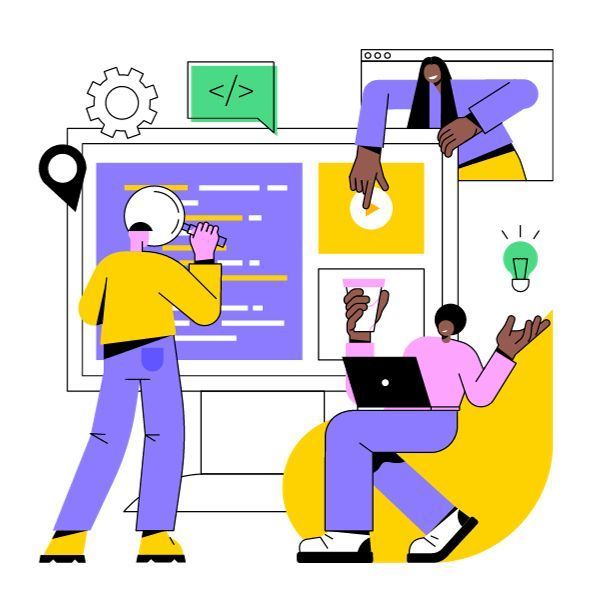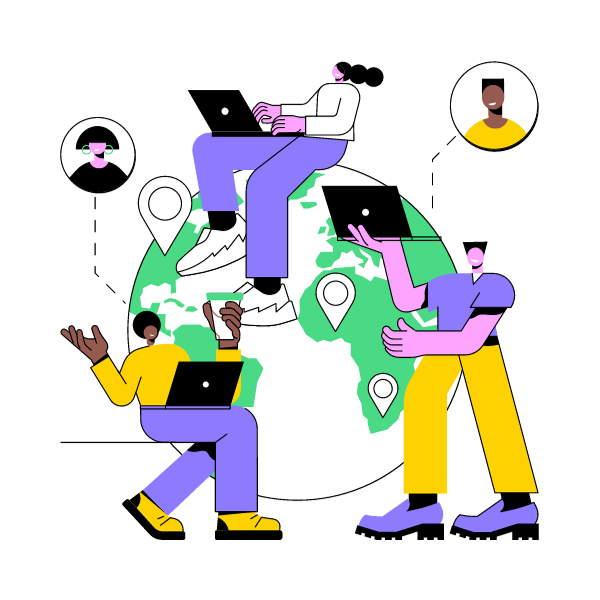spaceforthought - UI/UX Design & Brand Design
Navigating the future

Will graphic designers still be essential to your digital projects in the near future?
In the world of artificial intelligence and design tools such as Canva and Adobe Express, there is a question that arises: Will the work of graphic designers still be essential to your projects? As AI and design tools continue to advance at an alarming pace, this question is becoming increasingly important.
Despite its strengths, AI falls short of capturing human designers’ emotional intelligence and nuanced understanding. In terms of generating designs based on data inputs, AI is a formidable tool. But AI does not have the innate creativity and emotional sensitivity that human designers have. Can it really capture the nuances of your brand’s communication style? The power of human graphic designers lies in their ability to go beyond simple data sets and really think about how your message, visual presence, and their experience with your product will impact your target audience.
Let’s break it down. AI excels at dynamic personalization, handling multiple variables, and creating variations. But when it comes to interpreting subtle cues, understanding emotions, and filtering out biases, human designers take the lead. The role of designers is evolving from mere creators to insightful curators.
Weaknesses of AI in Design:
1. Lack of emotional intelligence:
AI lacks the inherent ability to understand and interpret human emotions, resulting in designs that may lack emotional resonance or connection.
2. Limited creativity and innovation:
While AI can generate designs based on existing data, it struggles to exhibit the creativity and innovative thinking characteristic of human designers.
3. Inability to understand context:
AI may struggle to understand the intricate nuances and context specific to a brand, resulting in designs that may not align with the intended message or brand identity.
4. Dependence on Input Data:
The effectiveness of AI depends on the quality and variety of input data. Biases present in the data can be perpetuated, resulting in potentially biased or non-inclusive designs.
5. Difficulty with abstract concepts:
AI can be challenged when dealing with abstract or conceptual aspects of design that require a profound understanding of cultural, social, or contextual elements.
6. Lack of intuition:
Unlike human designers, AI lacks intuition and the ability to make design decisions based on subjective preferences, making it difficult to capture the essence of a brand or project.
7. Inability to effectively incorporate user feedback:
While AI can adapt based on patterns in data, it can struggle to incorporate qualitative feedback from users, hindering its ability to refine designs based on subjective preferences and user experiences.
Copyright and Ownership
The ethical landscape surrounding AI-generated designs, including logos and images, becomes complicated when considering ownership. An illustrative example is the challenge of claiming ownership of AI-generated logos or images. Because these creations are the result of algorithms built on existing datasets, the resulting designs may not be entirely original in the traditional sense. The AI's ability to blend and reinterpret various elements may make the final output a synthesis rather than a wholly unique creation. As a result, claiming sole ownership of AI-generated logos or images becomes a complex endeavor, as the influence of pre-existing data and algorithms blurs traditional lines of authorship. This example highlights the evolving nature of intellectual property rights in the context of AI-driven creativity, and calls for a reevaluation of traditional ownership frameworks. As the design landscape continues to evolve, the industry must grapple with such nuances to establish ethical and legal frameworks that address the unique challenges posed by AI-generated content.
Conclusion:
Navigating the future digital design landscape, the question looms: In the era of artificial intelligence and advanced design tools, will the role of the graphic designer remain indispensable? While AI has strengths in dynamic personalization and generating designs from data, its weaknesses are glaring. A lack of emotional intelligence, limited creativity, and difficulty understanding context highlight AI’s inherent limitations. When we break down these weaknesses, it becomes clear that human graphic designers, with their emotional sensitivity, creativity, and ability to interpret subtle cues, still hold a unique position. The evolving role of designers from creators to curators further underscores the enduring importance of human input in the design process. As we consider the weaknesses of AI, it reinforces the importance of human designers who go beyond data sets to ensure a nuanced and impactful connection with audiences. In this ever-evolving landscape, human designers will remain relevant as they navigate the complexities that AI will struggle to comprehend.
Have you considered the depth of understanding that human designers bring to the digital canvas? Can AI truly decipher the intricacies of your brand identity and communicate effectively with your audience?



